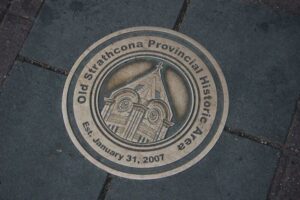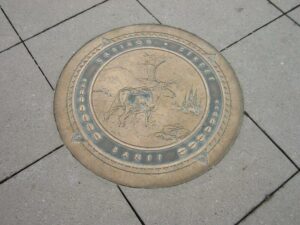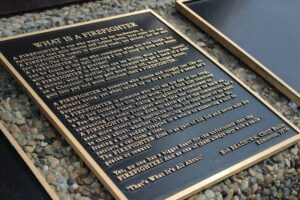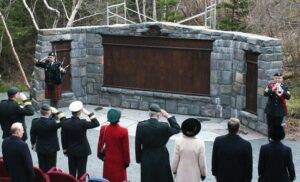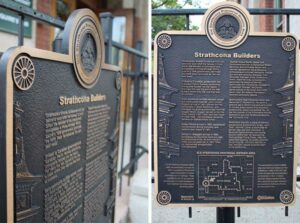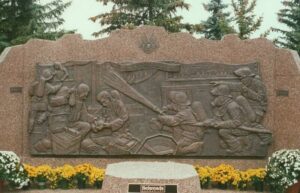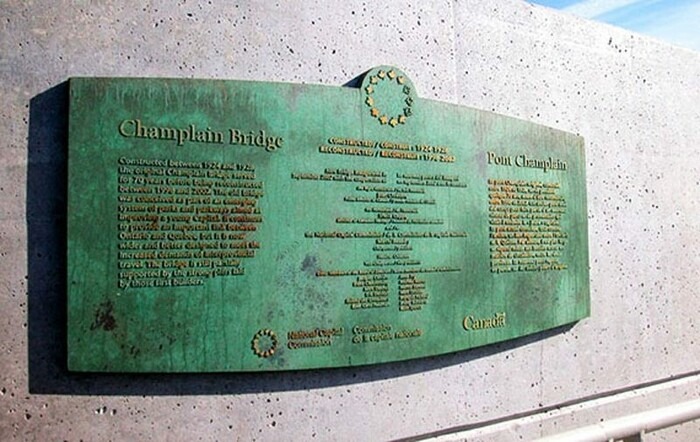Effective built environments are more than just physical places; they are social spaces which craft emotional interactions between individuals, places and communities. Sometimes, the desired effect of an environment is to be vibrantly current and to foster a forward thinking attitude in its users. Other times, creating ties between individuals, community, and place requires the creation of historical memory. History is the narrative that links individuals to the past, and through a shared past, communities are linked to one another. When history is made visible and physical in the landscape through architecture and urban planning, or signage and memorials, the past is made present and meaningful.
“COMMEMORATIVE PLAQUES & MEMORIALS: KEEPING SOCIAL MEMORY ALIVE”
Commemorative plaques mark the location of significant events or illuminate the underlying meaning of sites and buildings, while memorials keep the memory of notable figures and community members alive in the places and communities which they helped shape. Keeping social memory alive contributes to community cohesion and pride, and the use of memorials and historical signage to maintain social memory can operate at different scales.
War memorials preserve the memory of nation-forming events, while plaques on historical buildings preserve local historical meaning. Even street signs such as those for Whyte Ave and in Garneau, which keep the historical street name alongside the current number system, preserve the shape of the old city alongside the new. Grave markers carry historical memory on a familial level and can teach us a lot about our collective pasts as well.
With over sixty years of our own history as a local business in Edmonton, Behrends has proudly contributed to the creation of historical memory through civic, provincial, and federal projects including plaques, signage, and memorials. Emphasizing craftsmanship and quality materials over mechanization, Behrends brings the human touch and community connection to our projects – qualities which enhance the significance of projects intended to create historical memory.
Depending on the desired effect of a sign or memorial within a built environment, different materials and styles offer different benefits. Bronze is an excellent choice for imparting historical weight and significance. An extremely durable material which has been used since 3800 BCE, bronze ages attractively and has instantly recognizable connotations of age, permanence, and authority. Its unique green aged look is associated with buildings such as the Canadian parliament, and cast bronze statues in old European town squares. Before even reading a bronze plaque, the viewer knows that the medium signifies “history” through its appearance and long history of its very material.
Beyond its cultural meaning, bronze offers our clients excellent value with its durability and flexibility. Bronze is an alloy of copper, which means that the copper oxidizes and gives bronze its characteristic green patina, which protects the underlying material. For new projects, Behrends can accelerate the aging process in order to produce the attractive and historical effect of the green patina. For old pieces which have acquired a less attractive, dull brown patina, Behrends also offers restoration services. Restoration can bring the brilliance back to old commemorative plaques, ensuring that they continue to contribute to historical memory, rather than fading into the landscape.
All in all, bronze plaques have a multitude of applications and are especially perfect for legacy pieces that go towards contributing to large narratives – whether national, provincial, or civic. Whether used for a personal memorial project or a governmental commemoration, bronze plaques offer presence and powerful social memory. To look into custom bronze signage and plaques, contact us today.
